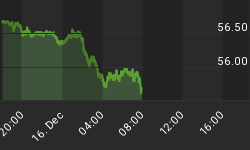During this global outbreak of Swine Flu, traders are likely to exhibit extreme risk aversion and may show an extraordinary demand for the safety of lower-yielding assets. While other significant news may be released throughout the week, these stories are likely only to limit but not totally erase gains in both the Japanese Yen and the U.S. Dollar.
On Monday the EUR USD weakened considerably and traded through two handles as traders dumped the Euro for the safety of the U.S. Dollar. The break was related to the weakness in the global equity markets. At first traders thought the declines were triggered by negative news regarding the preliminary bank stress reports but now it has become clear that the selling pressure was associated with the outbreak of Swine Flu.
The action in the equity markets indicates that traders have become risk averse again. This means they are selling higher risk, higher yielding assets and seeking the safety of the U.S. Dollar.
Besides the Swine Flu scare putting fear in the markets and driving investors to the safety of the U.S. Dollar, the Euro accelerated to the downside following bearish statements from European Central Bank governing council member Ewald Nowotny.
Nowotny said that the Euro rate will stay low for a while and the ECB is ready to use non-standard means to help ease rates if needed.
ECB President Trichet added more fuel to the fire by saying that 2009 will be a "very bad year" for the Euro economy. In addition he thought a recovery would only emerge next year.
Pressure was on the GBP USD throughout the day as weakness in the equity markets, triggered by trader fears over the outbreak of Swine Flu, led traders to seek the protection of the Dollar.
Additional selling came from traders reacting to last week's announcement of a contraction in the economy of 1.9% and a projection of a 90 billion pound deficit. Traders are extremely bearish on the British Pound at this time because they see no sign of a bottom in the economy but a greater chance of seeing the budget deficit widen.
Sellers hit the Canadian Dollar hard all day. Risk averse traders bought the U.S. Dollar for protection in anticipation of lower equity and commodity markets.
The outbreak of Swine Flu is weakening higher risk assets as traders are more interested in the safety of their investments rather than the return on their investments. Traders also sold industrial metals like Copper and Platinum on the thought the U.S. economy will recover more slowly than previously forecast.
The Japanese Yen was the lone Forex gainer versus the U.S. Dollar on Monday. Weakness in the stock market fueled a reversal of the carry trade as investors sought safety in lower yielding currencies.
Concerns over the U.S. banking system also provided support. For the last 14 market days, investors have been hedging their bets against the stock market weakening because of the failure of a major U.S. bank.
Talk is also circulating that the Japanese government is clamping down on speculation and enforcing rules about excessive lending to carry trade investors. The government is also trying to control the leverage to which these investors have been given access.
The Swiss Franc traded under pressure all day as traders became more averse to risk following the decline in the equity markets due to the outbreak of Swine Flu.
Last week traders were buying the Swiss Franc in anticipation of an increase of the U.S. budget deficit. During the first three days of this week the Treasury is expected to auction about $100 billion in new 2, 5 and 7-year notes. On Monday the first auction took place and attracted better than average demand of $40 billion in 2-year notes. Yields on the 2-year notes were steady, most likely because the auction took place at a time when there was demand for safe assets. The Fed also did its part to keep rates down by purchasing $7 billion in debt.
Forex markets that rely on both demand for equities and commodities were hit hard on Monday by traders seeking safety and liquidity in the U.S. Dollar. This included both the AUD USD and the NZD USD.
With so much uncertainty in the markets regarding the Swine Flu outbreak, traders had no problem dumping higher risk, higher yielding assets like the Aussie and Kiwi. This trend is likely to continue until there is more clarity as to if the flu can be isolated and contained.
Today's events came at bad time as most struggling economies were just starting to show signs of recovery. With the Swine Flu outbreak likely to cause trillions in losses globally look for more weakness in currencies such as the Australian Dollar and New Zealand Dollar.
Expected weakness in the New Zealand economy is causing traders to price in a 50 basis point rate cut by the Reserve Bank of New Zealand at its next monthly meeting. The longer it keeps rates lower, the lower this currency is likely to fall.
















